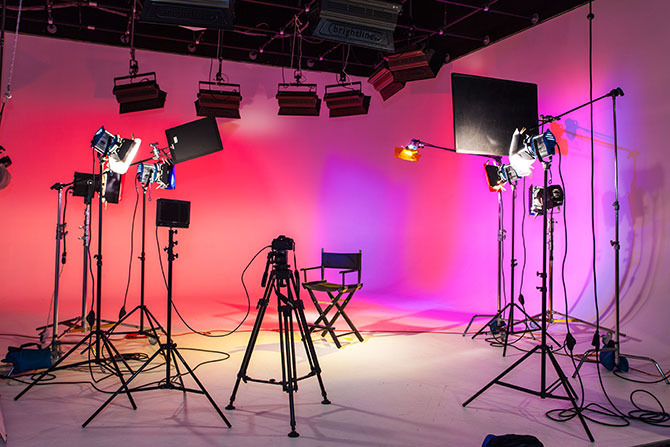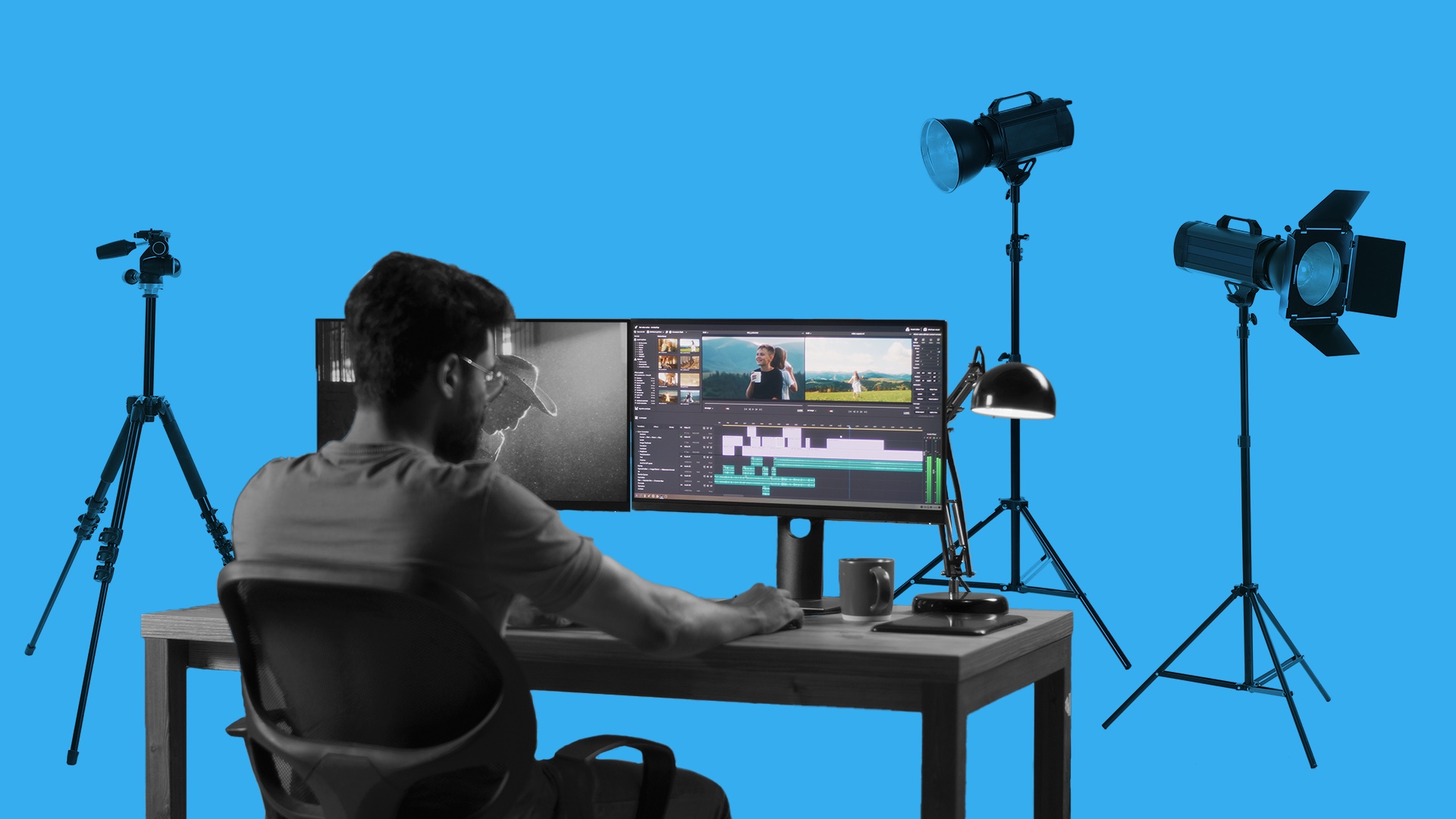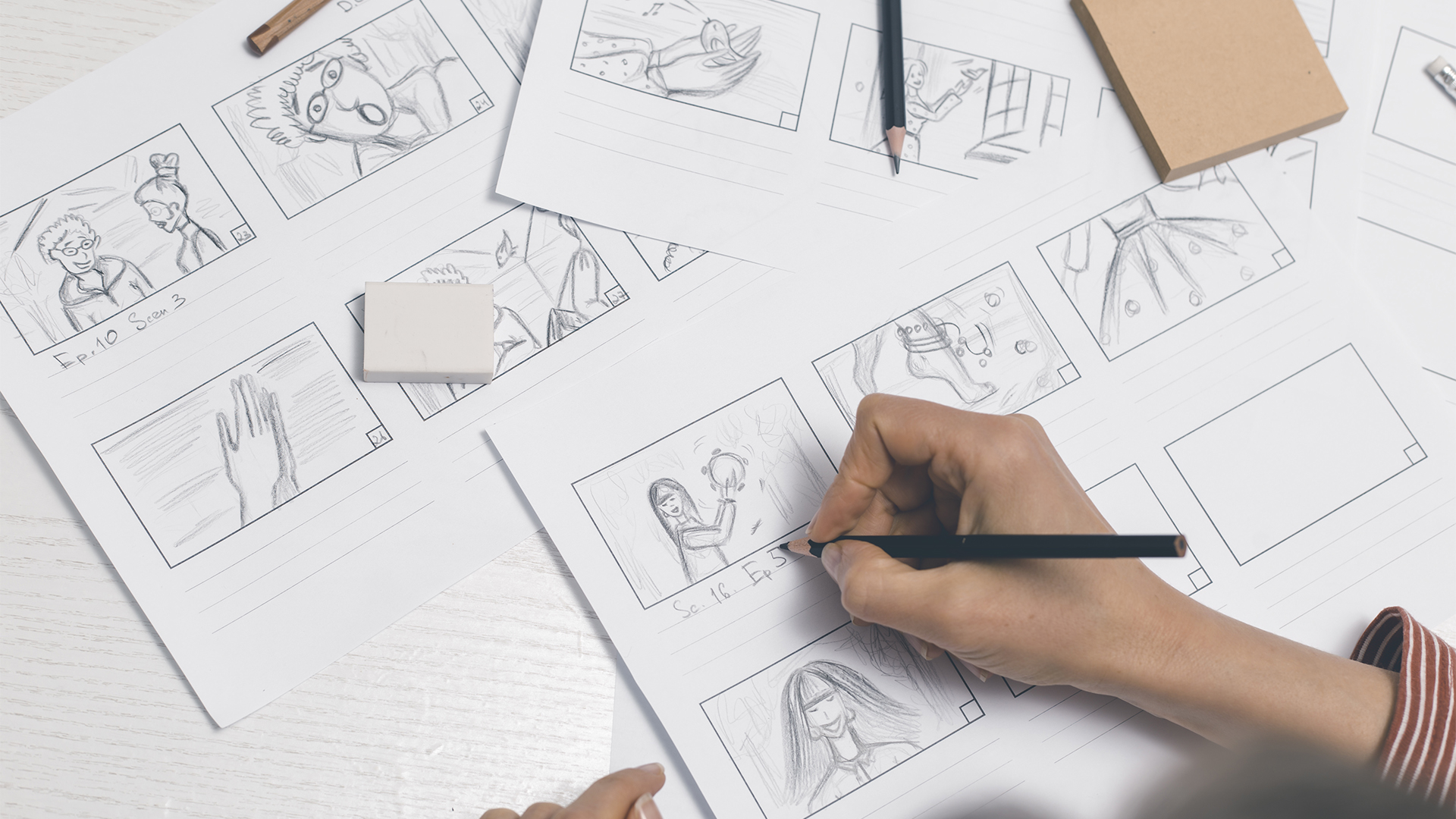Looking to create a standout video for your business but not sure where to start? Whether it’s a promo or a customer testimonial, the secret to success is understanding the process of video production. By breaking it down into manageable stages, you’ll navigate your project smoothly and ensure top-notch results. Even if you’re hiring a video production company, knowing the ins and outs will make all the difference. Let’s dive into the journey from concept to final cut.
The Video Production Process: A Complete Step-by-Step Guide
The video production process is typically divided into three stages of video production: pre-production, production, and post-production. Each of these stages plays a critical role in shaping the final outcome of your video.
Pre-Production
This is the first phase of the video production process. It is the stage for all the planning and coordination before the shooting starts. The major steps in this phase are outlined below:
Conceptualise your Video
- Define the video objective: Why do you want a video? Is it to increase your brand awareness, or will you use it for an investor’s pitch? The core purpose of the video, whether it’s a product video or a explainer video, will impact everything, right from the message and narrative to the aspect ratio you need.
- Understand your audience: Who is the video for? For example, if you’re creating a corporate video, your audience could be potential clients, investors, new employees, or internal teams. Each group requires a different approach in tone, messaging, and presentation. This is where a corporate video production company proves valuable — they can help you identify your target viewers, fine-tune the content strategy, and create a video that resonates with the specific audience you want to engage.
- Set your budget & timeline. Define a realistic budget and deadline. With new developments in video technology, you can create high-quality videos that entertain your audience while effectively telling your story within a reasonable budget. You can use stock videos rather than shooting a video from scratch based on your need. This will cut some of your production costs and efforts and help you optimize your video production budget.
Plan the Content
- Write a script: A script needs to be written in tune with the video objective. It acts as the blueprint and foundation for your video — a chronological sequence of scenes, actions, dialogues, and voice-overs that bring your story to life. For example, during a corporate video shoot for our client Thyrocare, our team crafted detailed scripts for both their company profile and induction videos, ensuring the messaging aligned with their business goals and audience expectations. This project was part of a successful video production in Mumbai we executed for them. If you’re curious to know more about these corporate vidoes, read our detailed case study – Confident, Proud and Welcoming: Corporate Videos For Thyrocare.
- Create your storyboard: A storyboard encapsulates the script. It helps to pre-visualise the video – depicting it through illustrations of the different shots you need to put in the video.

Pic Courtesy: stock.adobe.com Storyboarding
- Make a list of production elements: Brainstorm about the various production elements like lists of the people, places, props, and production set.
Find Your Location
You must scout for a location based on your video objective and script. For example, if you are doing a simple product shoot displaying a range of products, a quiet, well-lit room is the best choice. We followed a similar approach during a product video production for our client, Philips.
But suppose you are doing a fashion shoot, then you need to look for a suitable set that offers outdoor and indoor shoot facilities. Anticipate and prepare for any problems you may have. For example, if you’re filming outside, have a plan in case it rains!
Vet the Talent
After confirming the location, you need to finalise the right talent for your video. You’ll need to search for a specialised team offering photography and videography services to execute the entire shoot professionally. If you’re filming a scripted story, you must hire some actors or voiceover artists, allied persons like make-up artists, stylists, set designers, etc. If you’re recording a testimonial, this means asking your satisfied customers to talk about their experience on camera. Check out this testimonial video created by us for our client, Philips.
The primary equipment you will need to shoot a video is a good camera, microphone, and lighting setup. Many places also rent out video equipment. This will allow you to use much higher quality kits than you could afford to buy. However, if you hire a reliable video production company to do your video, you do not need to think about the equipment.
- Schedule the shoot
Scheduling the shoot beforehand is important so that you don’t end up scrambling on the day of the shoot. Consider your deadline and the availability of actors, other crew members and shooting location before locking in a date.
Once this is done, it is time to move on to the production phase.
Production
The ideation is done, and the preparation is complete. It is time for action now, the action phase of the video creation process. The production phase is where you capture all the shots for your video. This is the part where the script and the storyboard begin to come to life. This phase will go smoothly if you have a well-defined objective and a supporting detailed script and storyboard.
- Set up your equipment
Set up your camera, acoustics and lighting at the selected location lot of time ahead of the shoot. If you need different shots across different locations, make sure you have provisioned enough setup time into your schedule.

Pic Courtesy: pinterest.com Equipment Set-Up
- Rehearse
It is always worth shooting some test footage to ensure everyone knows what they are doing. You will also understand whether you require extra lighting and sound equipment.
- Film the video
Switch on the camera and start filming. Refer to your storyboard to ensure you film all the shots you need. Be vigilant in sticking to your time schedules. In the case of a short video, the main shots can be completed in a day. You might need your film crew to go out at another time to shoot B-rolls. B-rolls usually include extra shots that supplement the main footage. Depending on the type of video, you may need to create animations or record professionals voiceovers for a great video.
Post-Production
The final stage in the video production process involves editing and combining the different video elements to create the final output. In this stage, the storyboard comes to life – embedding the B-rolls, graphics, adding acoustics and animation or any other special effects to enhance the raw footage.

Pic Courtesy: quickframe.com Post- production
The steps involved in post-production are as follows:
- Editing
The best shots are chosen, discarding the unnecessary moments to ensure smooth content flow in the video. Editing is critical to the final look, feel and narrative structure of the video – a good editor is a must.
- Adding acoustics
Background music or vocals are added to supplement the mood and tone of the video. Sound mixing must be done to ensure a proper balance among all the elements of an audio track, like dialogue against music and sound effects. Any jumps in volume and jarring effects also need to be eliminated.
- Adding graphics
Graphics, subtitles, visual effects and animation are added to display any important information or add extra zing.
- Colour Grading
Colour grading, fixing the contrast, saturation, skin tones – this is not just a minor correction exercise. The colour palette has a huge role to play in the final result, even impacting the story and narrative. Even Nishanth Menon, a cinematographer, mentioned the importance of color grading in elevating the final look of a video in one of our episodes of our podcast, Photosynthesis.
- Initial approval and revisions
Once the final draft version of the video is ready, it’s time to review the work. If you are working with a video production company, there may be a pre-defined number of revisions or hours set aside for modifications. When you clearly define your objectives, plan the details and creative processes in pre-production, and proceed to match your vision, you should only end up with a few revisions.
- Final Delivery
Once the video is finalised and approved, it’s time to render it. It means creating the finished video files as per the specifications for your chosen hosting and distribution platforms. The format will depend on where you are sharing the video – Instagram prefers vertical videos. If it is going on several platforms, it is better to have plenty of room for cropping and editing in post-production.
If this seems overwhelming, partnering with a video production company can ease the burden. A reputable video production company in India like IndieVisual brings expertise, professional talent, and high-quality gear to your project. Whether you need corporate video production services for brand films, explainer videos, or promotional ads, we manage the entire video production process — from concept development to final delivery.
Our video production services are tailored to meet your specific needs, ensuring your videos not only look great but also achieve your business objectives. With a trusted video production company by your side, you’ll have access to experienced crews, creative direction, and the technical infrastructure needed for professional video storytelling.
The video creation process might seem intricate at first, but by breaking it down into the three stages of video production — pre-production, production, and post-production — you’ll have a structured, manageable workflow. Whether you produce videos in-house or collaborate with a video production company, understanding the stages in video production empowers you to make informed, creative and strategic decisions.
Ready to turn your ideas into impactful videos? Get in touch with IndieVisual — your trusted video production company in India and let’s create content that delivers.































